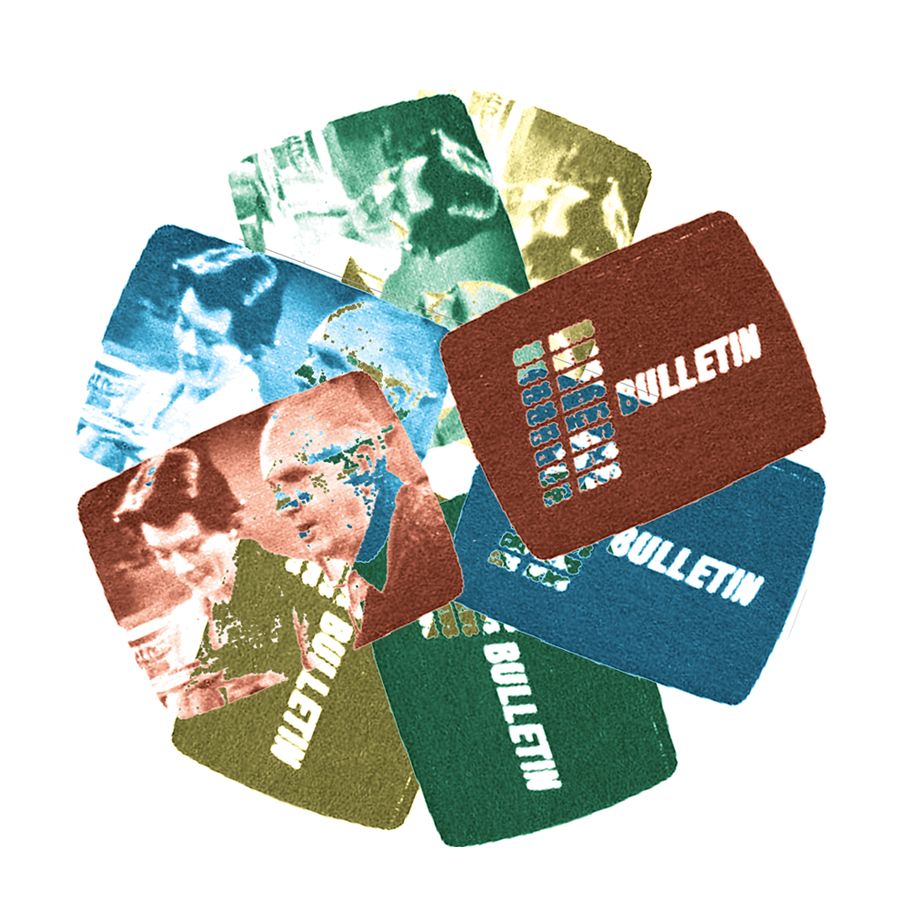Burgeoning through a capricious gaze in the late ‘80s, the Dead C.’s tempered rise to legacy is currently testing the glass ceiling of the underground. If you, as I, were also born with the moon in post-punk, early Dead C. records were beyond the pale by the time you came of age. However, recent years have offered respite in reissue format, with the exception of Operation of the Sonne, a title which I happen to covet. In the spirit of the popular opinion garnering interest, whittled on down to cliche, if I had a penny for every time the Dead C. was referenced, the price of this original pressing would increase in tandem and still no transaction would transpire. Good thing I thought that one through first. Guess who didn’t?
How do I explain Yek Koo? You know how people like to say, “Blondie is a band”? Well, Yek Koo is a suck.
This is an exceptional example of the inevitable meretricious collateral seen in the long program of new waves and their wakes. At best, this album was a prepaid party favor at a particular online fundraiser’s end game – the mixed-message installation art show, “Touching Them Touching Me – A Love Song for the Dead C.,” by artist Helga Fassonaki, who performs as Yek Koo. In addition to funding the album, contributions went to a hyperreal reconstruction of Empire Tavern, a bar in New Zealand in which the Dead C. played early shows, and a ping-pong table – not sure. The closing was a separate event; three nights of bands billed as a “three day performance series,” with a subtitle I will drop as gently as possible, “Trapdoor Fucking Exit.” Three enviable nights regardless, as the Charalambides and notable kiwi émigrés Brian and Maryrose Crook of the Renderers played. I could have grabbed a smoke during the “drunkenly stumbling,” lackadaisical, free-form guitar with occasional percussive gestures and bathtub chanting that is the basis of the recording I am supposed to focus on here, as previously captured with a Dictaphone to vinyl.
As tributes go,
Love Song for the Dead C fails diametrically. If meant to honor the band in form, it does so by picking up tenets at the surface: improvisation, a guitar, not using a recording studio, applying them with the cadence of a narcoleptic doing homework. Surely uncomplimentary to a band that finds even Yo La Tengo’s cover of “Bad Politics,” the Dead C.’s most accessible song, subpar. If we view Fassonaki’s work, the album and installation in total, with the pretense of the Dead C.’s philosophies at hand, refractions of mimicry and idolatry overwhelm, which couldn’t be farther from their ultimate endorsement of a new musical language. The only thing that keeps
Love Song for the Dead C from a complete wash is its bookends, two versions of a traditional Persian love song, first in Farsi, then in English, and we have to agree that they are love songs because they are love songs. But it’s a cheap device, and ultimately an undermining one, because it provides the final nail in the radical contingency of naming coffin. The identity of the work is in the identification. Trapdoor Fucking Exit… a tautological misstep.
In a statement of the artist’s intent, Fassonaki is compared to the role of a hagiographer, that she is depicting the lives of saints, here with the Dead C., in part one of a consecrated (God forbid) series. For good measure, it is also offered that she is commenting on delusions implicit in fandom. This choose-your-own-adventure style thesis is as damning to the popular opinion of contemporary artists as her album is to a working understanding of the subculture it aims to endorse, or critique, or worship, or emulate, or whatever. Yet we find the sublimated motive to forge a link between herself and the band tenuously achieved. Installation photographs depict Fassonaki with a seat at the bar she commissioned, the exacerbated double of the Empire Tavern. Although the program text available online fails to mention this, it is where the Dead C. recorded the closing side to
Operation of the Sonne. I hope it is not too self-serving to suggest that there may have been more effective means to an end here.
-Elizabeth Murphy
-from Still Single, Dusted Magazine





_-_Google_Art_Project-x0-y0.jpg)










.JPG)







